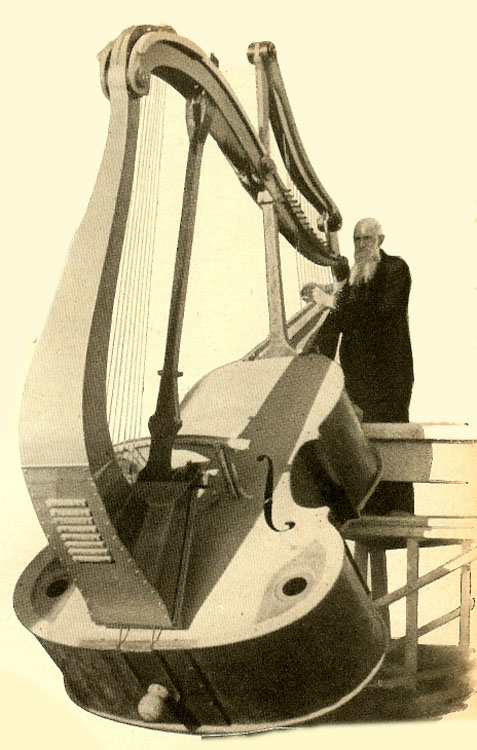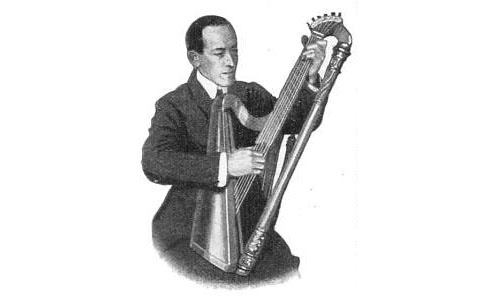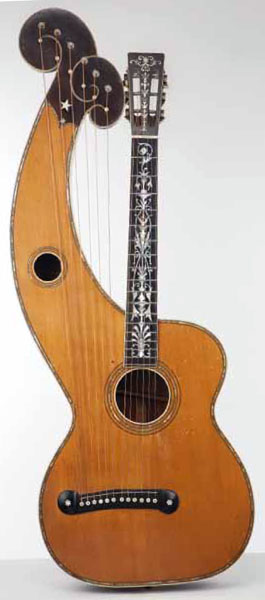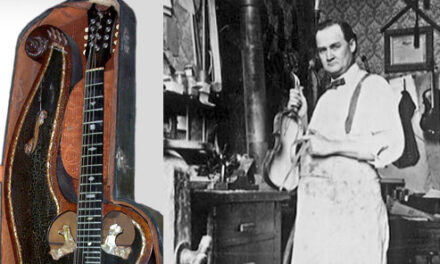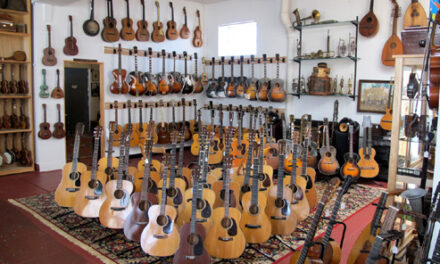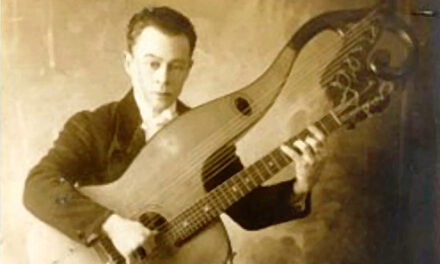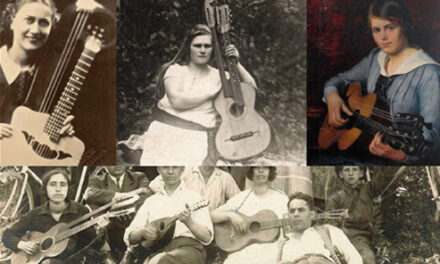Having written well over 10,000 words about what a harp guitar is, I wanted to add just a bit more about what a harp guitar is not.
I was reminded of this topic yesterday when Googling and discovering another well-meaning layperson describing our instrument as a “hybrid of a harp and guitar.” I’ve seen this a lot: i.e.: “a cross between a harp and a guitar,” “part guitar, part harp,” etc. This naive misunderstanding leads us to another little organological puzzle, and you know how I love those!
Let me first clearly state my stance on this: The (typical) harp guitar is not a hybrid instrument. Nor – despite the term – is it a “combination” of guitar and harp. 99.999% of all your hollow-arm harp guitars, your Gibsons, European double-necks, etc. are not “hybrid” instruments; they are simply extravagant forms of the guitar.
Maybe we should first establish (as applied to musical instruments): what exactly is a “hybrid”? After giving it careful thought, I would define it as “a combination of, or cross between, two (or more) different instruments, having recognizable and roughly equal key characteristics of each. And as I’m staring at the couple hundred instruments in my little museum (which I often describe as “specializing in hybrid instruments”) I’m having a hard time actually finding an example.
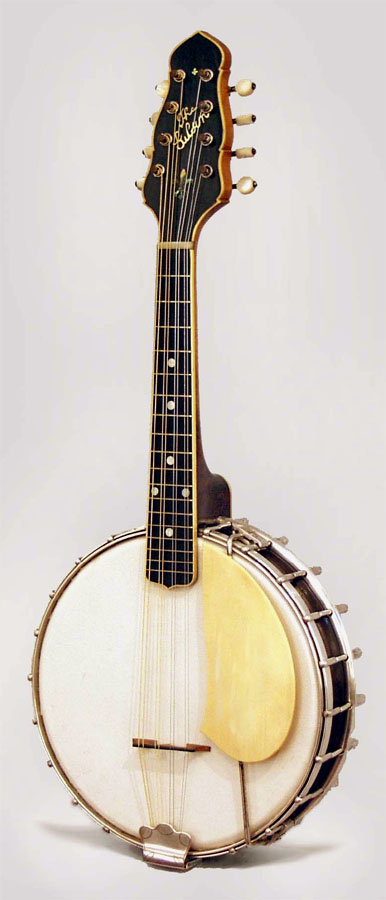
I suppose two likely candidates would be the 8-string (4 course) mandolin-banjo (a Gibson, above) and the 5-string mandoline-banjo (a Pollman, below).
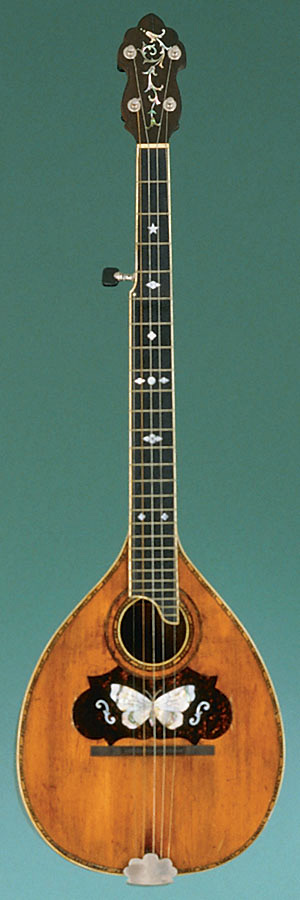
Despite the similarity of their inventors’ names, they are actually polar opposites. Each seems to be a particular type of known instrument but tuned like another. So are they hybrids? (Do they adhere to my ad hoc definition above?) They seem to both show a “cross between” a mandolin and a banjo, do they not? Or are they only modified variations of instruments: the Gibson a banjo in its basal characteristics (body, construction, sound) with a mandolin neck/tuning, and the Pollman a mandola in basal form with a long 5-string banjo neck? Frankly, the answer eludes me, and I suspect it may lie somewhere in-between (a “hybrid answer” – hah!), or either/or, depending on one’s perspective.
OK, so that little, well-intentioned segue got me nowhere. What about the “harp-guitar”?
Luckily, this one’s quite a bit easier (and not because, unlike the two examples above, it’s obviously not a “guitar that’s tuned like a harp” – though I’ve thought about that!).
Taking any one of the hundreds of different harp guitar forms as an example (say, the Dyer above or Gibson below), there is only one logical conclusion.
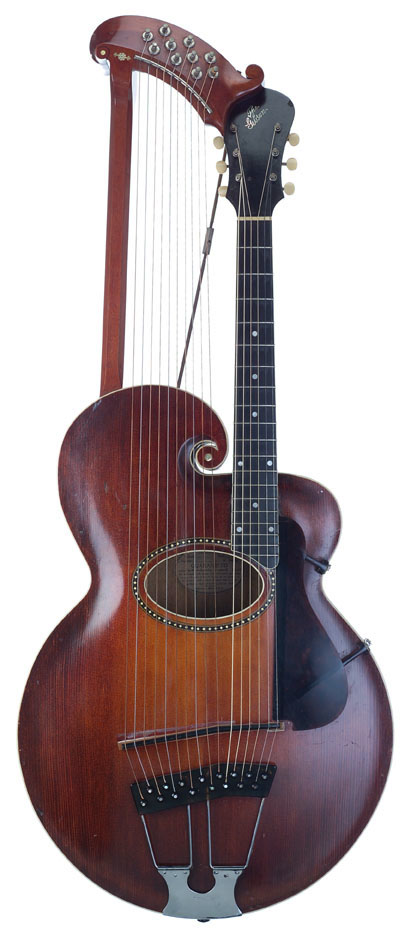 It is not a hybrid “cross between” a harp and a guitar because it really doesn’t have the predominant defining characteristics of a harp.
It is not a hybrid “cross between” a harp and a guitar because it really doesn’t have the predominant defining characteristics of a harp.
Which is?
If you guessed floating, un-fretted strings, try again. Many other chordophones have that feature (specifically, the lyre and zither families, both of which the harp guitar’s floating strings more closely resemble, an ironic observation we can save for another time).
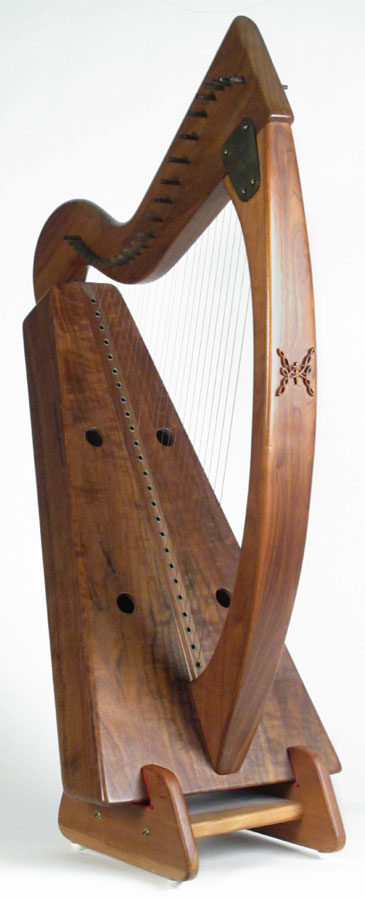
No, besides its basic triangular shape (the third side – the post or column – being absent in more primitive angular harps), what really makes a harp a harp is that the strings come off the soundbox perpendicular to its face (along the long axis), rather than parallel, as in lyres, zithers and lutes (the remaining chordophone family that includes guitars).

So a genuine hybrid “harp-guitar” that combines the key features of both, then, would have to be something like…
…well, this:
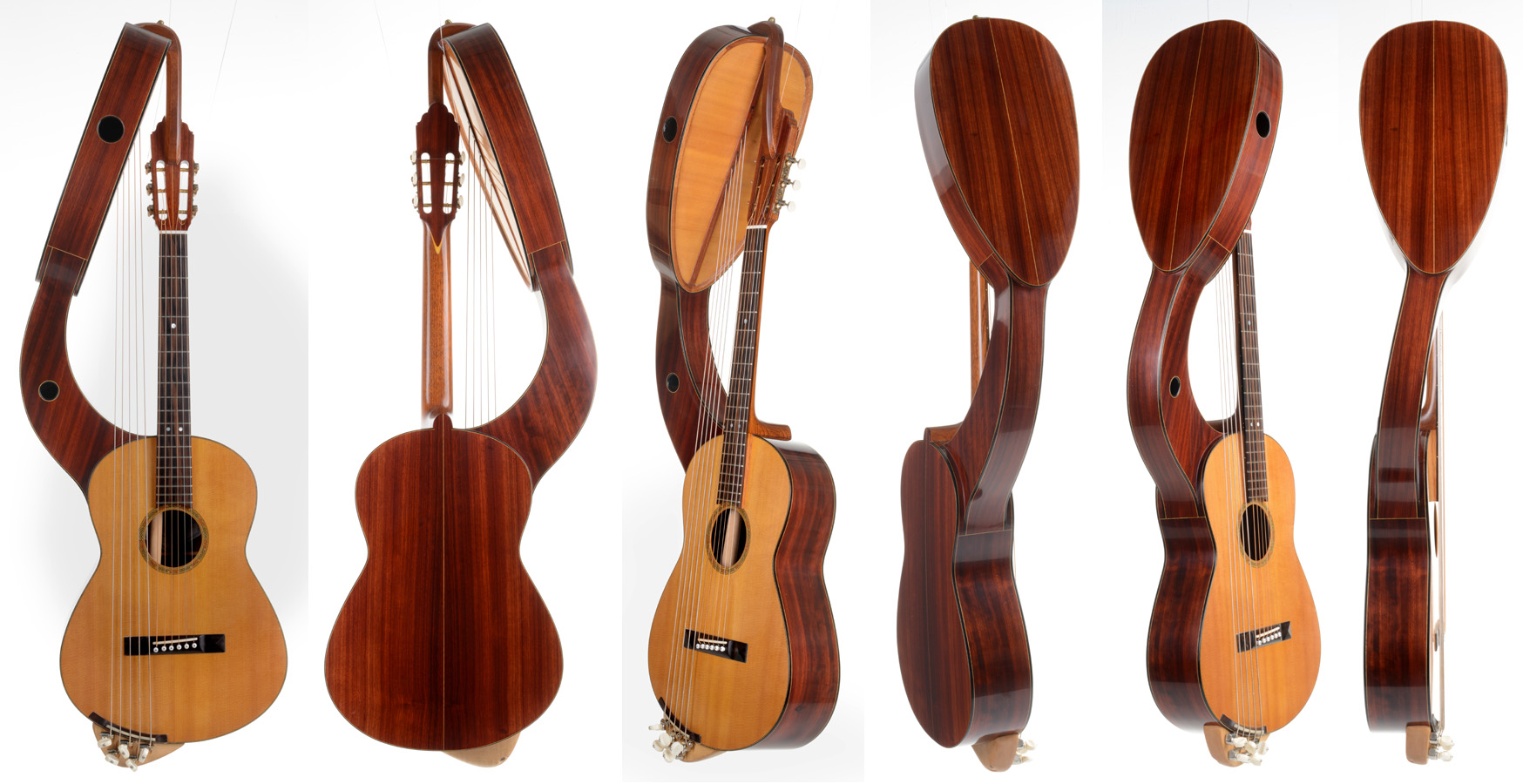
Builder Alan Carruth joked (but not really) that his creation was the world’s first “true harp-guitar,” and we can all see why. It actually is a true hybrid of both instruments’ key features. Unfortunately, it’s also an impractical white elephant, which is of course why I had to own it (and now do).
The only other example of this true hybridization that I can think of is the harpitar, which Alan himself commented on when I blogged about it 2 years ago. I still think Alan needs to build me on of these!
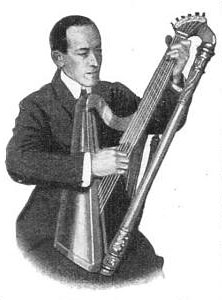

Other seeming harp-guitar “hybrids,” like the famous Brussels museum instrument above or the Candi chitarpa below, still fall short.
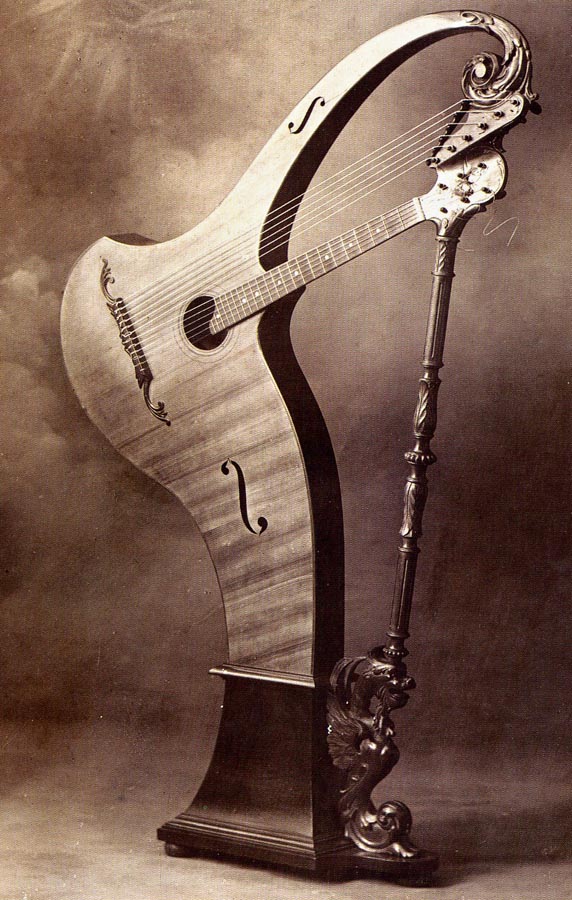
On both of these, the harp frame/body/silhouette masks the fact that it really has nothing more than an overly fancy guitar soundboard (i.e. flat). Yes, it’s understandable that the uninitiated could look at these and think “hey, that’s a combination of harp and guitar!” but what they’re seeing is really just a cool visual gimmick.
So for the record: Additional floating, unfretted strings – that are plucked as one would pluck a harp (or lyre or zither) – turn a guitar into a harp guitar…but they don’t actually make it “part harp.”
For that, you’ll have to try and talk Alan into another mind-blowing experiment, maybe even something like this!
